#antiquarian books
Photo
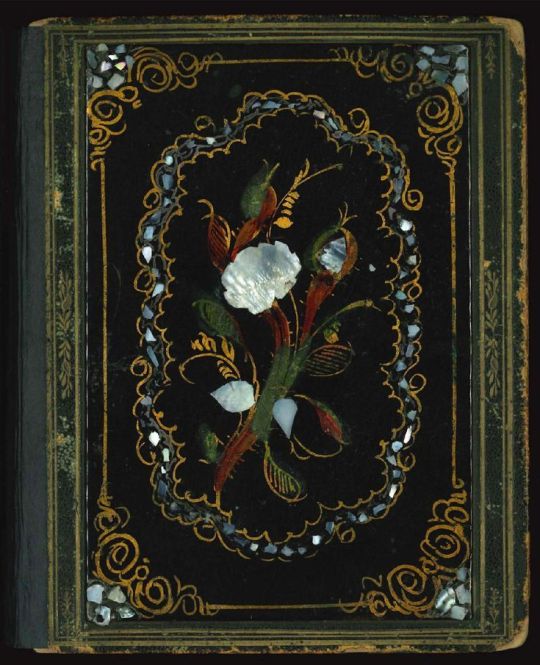
Victorian gift book c. 1850s-1860s with inlaid mother of pearl.
#i love these#i only have two#they are rare and fucking expensive#antiques#covet#antique books#antiquarian books#victorian books#book binding
8K notes
·
View notes
Text


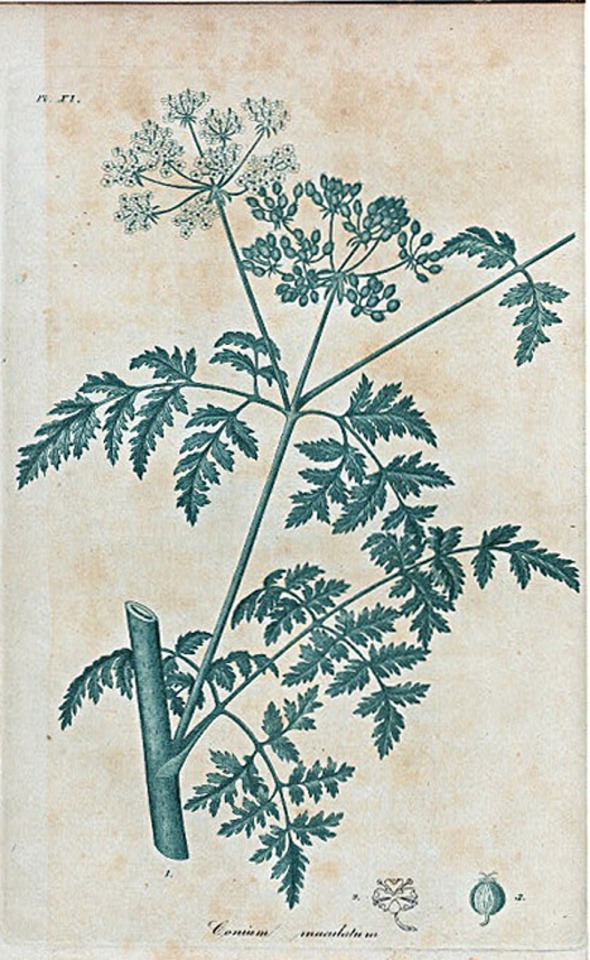

Coloured engravings of the poisonous plants datura, henbane, and hemlock from American Medical Botany: Being a Collection of the Native Medicinal Plants of the United States by Jacob Bigelow, 1817.
Source: New York Public Library
#banefolk#bane folk#poisonous plants#poison path#baneful plants#baneful herbs#henbane#hyoscyamus niger#datura#datura stramonium#hemlock#poison hemlock#conium maculatum#antique books#antiquarian books#pharmacopoeia#materia medica#botany
102 notes
·
View notes
Text
Be Warned: An Impostor is Among Us
I recently finished reading Oliver Darkshire's book Once Upon a Tome. Mr. Darkshire is an antiquarian bookseller at Sotheran's Rare Books in London. While I greatly enjoyed the book, I was deeply disturbed to read this passage:
"Of all the nice letters I've ever received, the ones I hold particularly close to my heart were sent from a mysterious stranger masquerading as the bookshop-owning angel Aziraphale from the novel Good Omens."
I do not understand why Mr. Darkshire describes me as being "from the novel Good Omens," as though I were some sort of fictional character. Setting that aside, however, it is unnerving to realize that a complete stranger is wandering the streets of London, writing letters and pretending to be me.
I can offer no proof, but I believe that the likely suspects can be narrowed down to a very short list.
A few years ago -- well, I suppose it was actually many years ago -- there was a book called History of New York. It was subsequently revealed that the author of this book, one Diedrich Knickerbocker, did not in fact exist. Perhaps "Mr. Knickerbocker" has moved on from creating fictional personas, and is now hijacking the identity of legitimate booksellers such as myself. (Regular readers will recall that I have previously commented on Mr. Knickerbocker: https://www.aziraphale.com/post/143753123162/a-curious-bit-of-satire-in-an-unvisited-corner-of)
Meanwhile, I have also been informed that there is a man named Buster Poindexter who is notorious for falsifying his identity. I have it on good authority that Mr. Poindexter has openly confessed that he is suffering from a personality crisis. It should also be noted that the name "poindexter" is often used to refer to someone who is enamored of books. Coincidence? I think not.
Another likely suspect -- or possibly "suspects," plural -- is a person or persons going by the name Pratchett Gaiman, or possibly Gaiman Pratchett. Again, I have no proof, but I have lost count of the times someone in the shop has asked me about so-and-so Gaiman or such-and-such Pratchett.
Finally, I cannot completely discount the possibility that my friend Crowley might be playing some sort of elaborate prank. He insists that this is not his doing, but it is just the sort of device that he would employ to rile me. He knows that pranks are anathema to me.
#aziraphale#aziraphale's books#sotheran's#oliver darkshire#gaiman#pratchett#crowley#imposters#bookstores#antiquarian books#diedrich knickerbocker#buster pointdexter#anathema
187 notes
·
View notes
Text
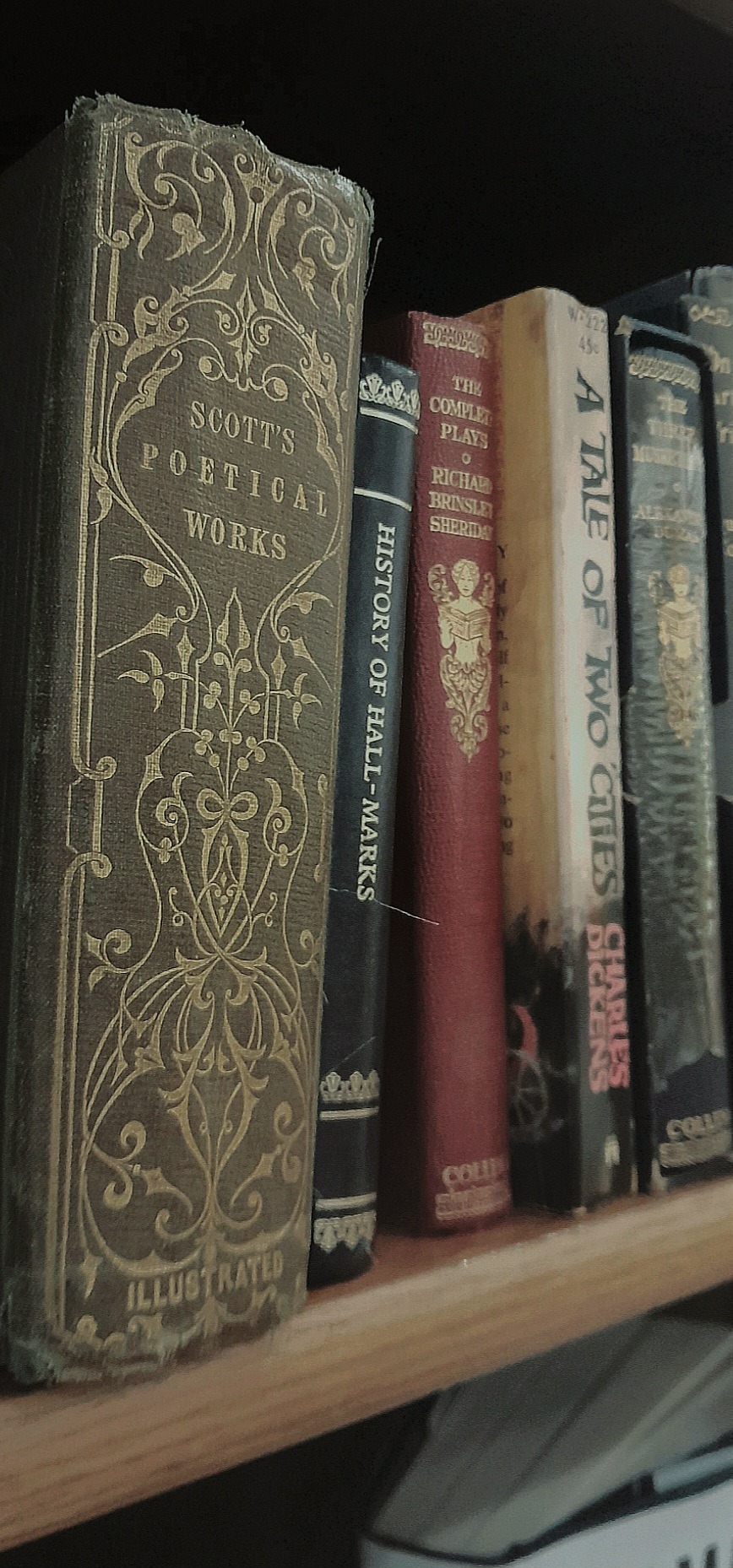

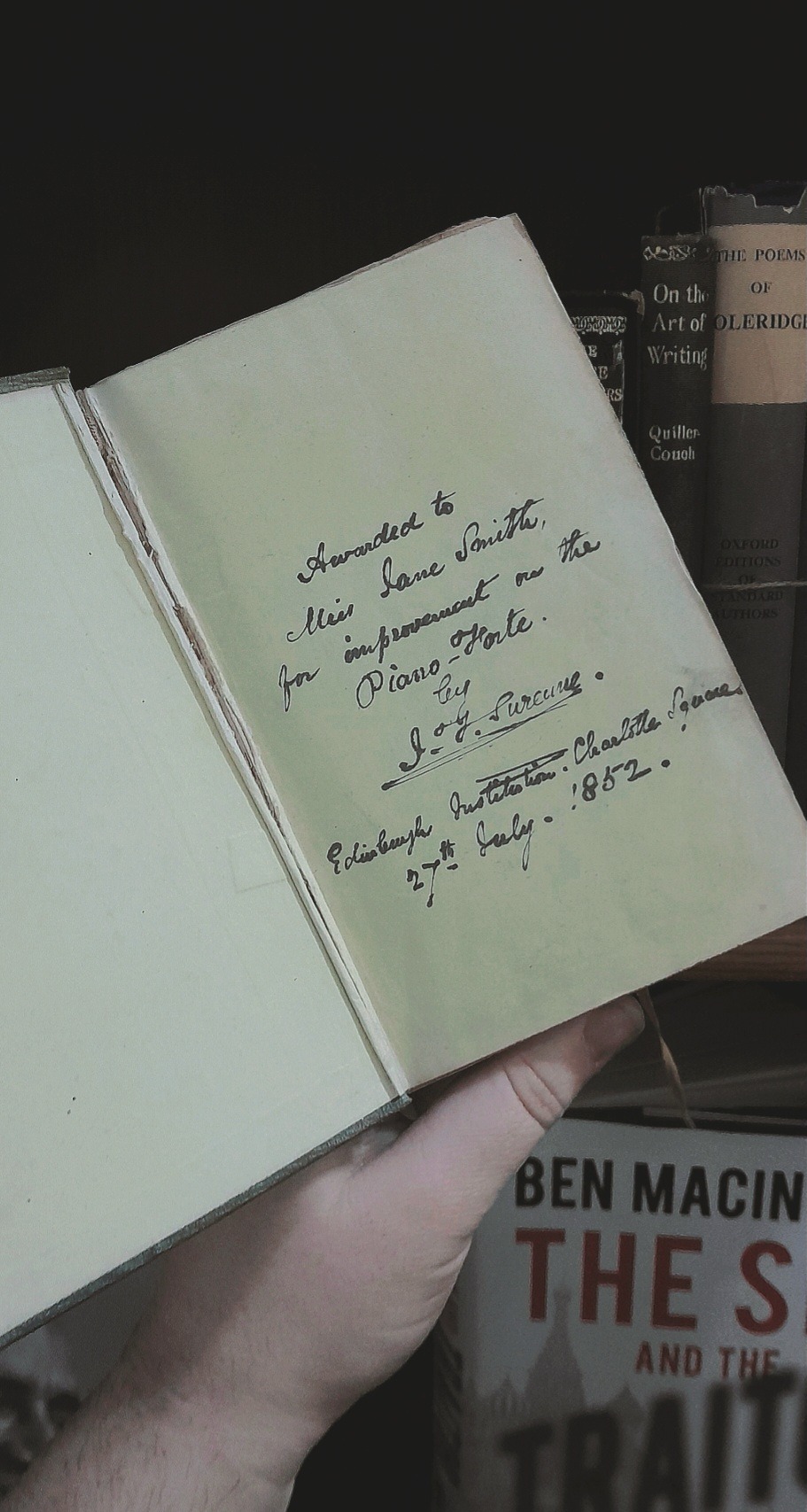

Scotts Poetical Works
With a dedication from 1852
#old books#antiquarian books#rare books#bookblr#booklr#book community#donated books#poetry books#charity shop books#pretty books#reader#bookseller#bookselling#bookshop#book girl#booklover#book stuff#books#book tumblr#dark academia#dark aesthetic#dark acadamia aesthetic
139 notes
·
View notes
Text
The tiniest book.
The book is Lute & Lyre and Other Musical Instruments of the 6th Century A.D. by Miriam Owen Irwin (in Miniature).
The book is 0.75 x 1 inch in size, wrapped in white leather, with gilt decoration, gilt top edge, and marbled endpapers. Hand bound by Hugo Grummich at the Cincinnati Mosaic Press. It was sold to me by Owl Creek Books (@owlcreekbooks on Instagram).
10-8-2023
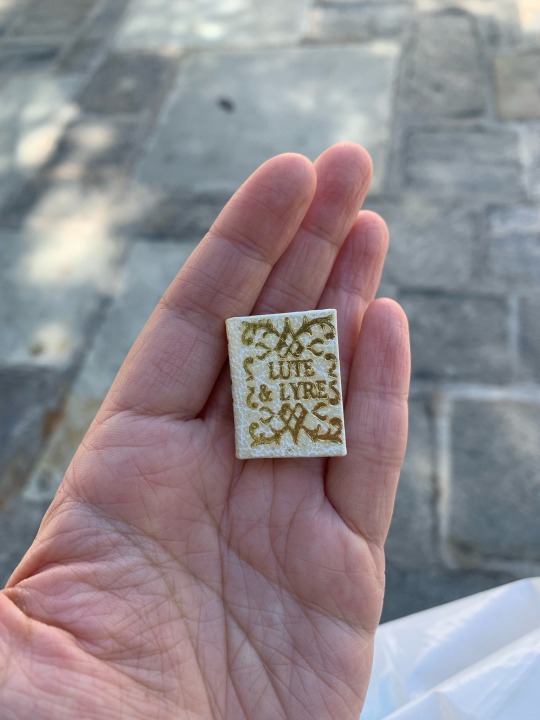

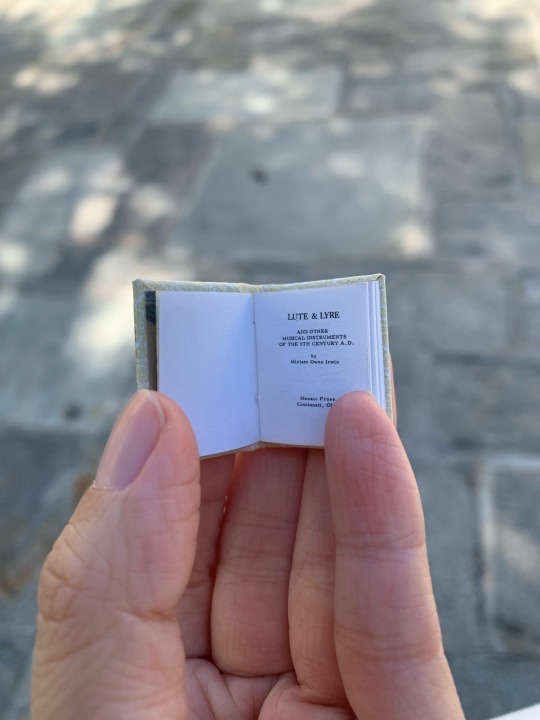
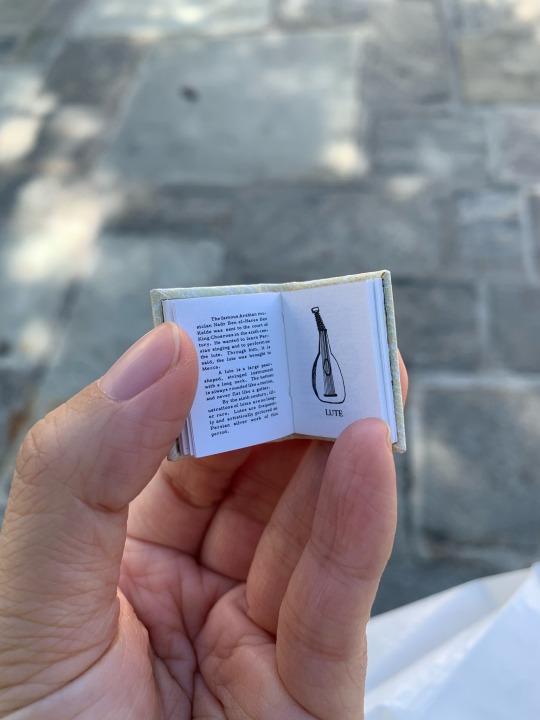
#handbound book#miniature books#book binding#bookbinding#rare books#antiquarian books#vintage books#vintage#handmade
62 notes
·
View notes
Text
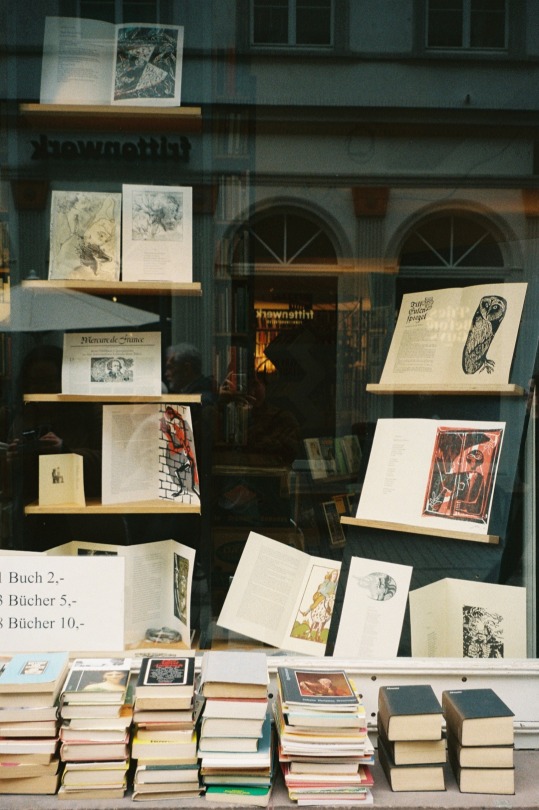
📖 canon prima zoom 85n, kodak ultramax 400
#germany#canon#books#city#book store#reflection#photography#antiquarian books#thrifting#film photography#35mm#analog photography#film is not dead#my photos#kodak ultramax 400
28 notes
·
View notes
Text
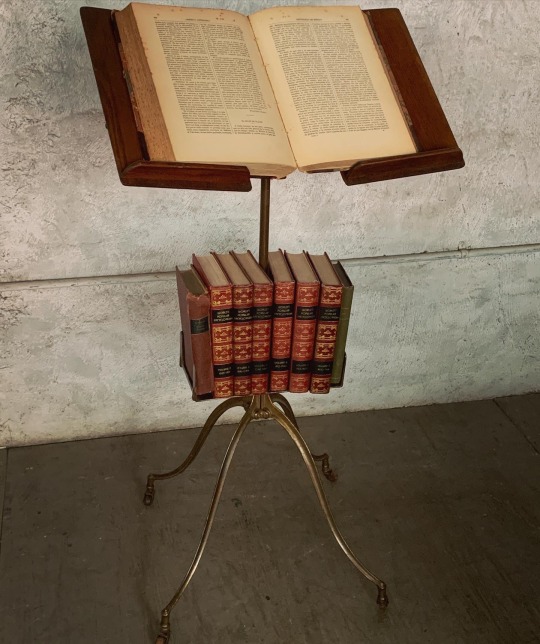


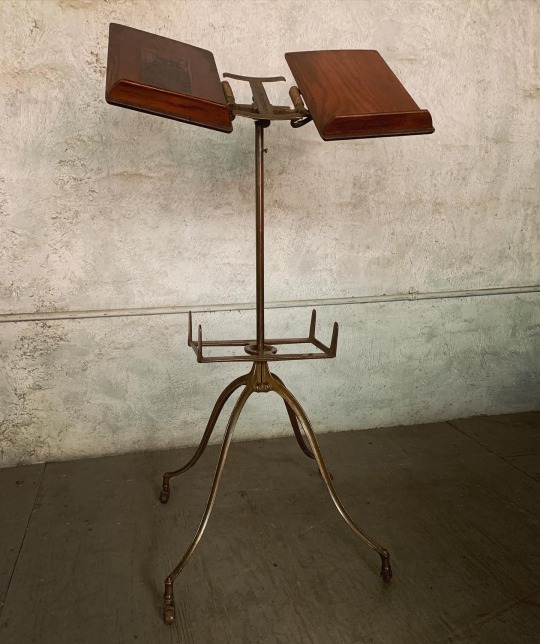

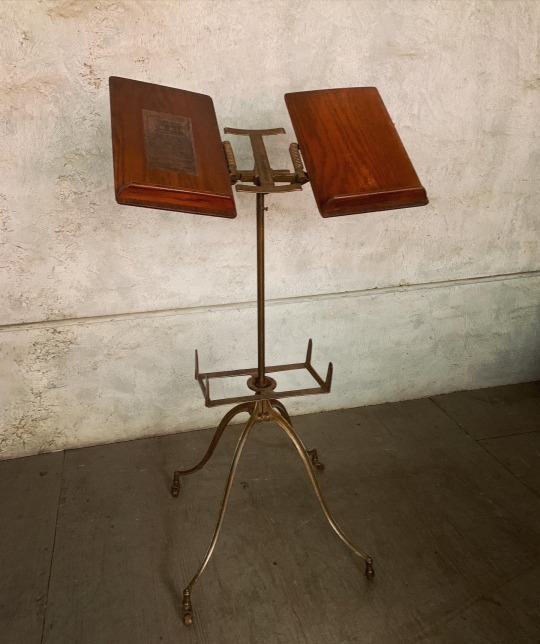

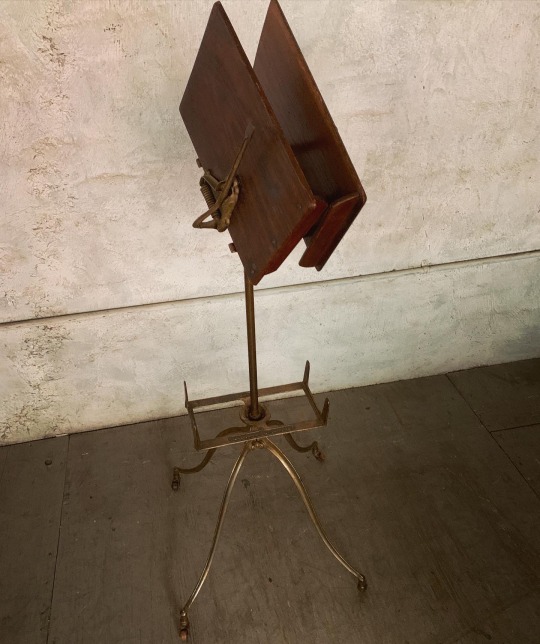
VICTORIAN BOOK STAND
A Superb Victorian adjustable cast iron and wood book stand in fantastic condition. A great piece to display and store that special piece in your library. Adjust in height and swivels , on original wooden casters , free and smoothly rolling.
Item No. E5741
Dimensions: 40" high x 16" wide approx.
List Price: $ 875
504.581.33733 / t
#antiques#magazine street#new orleans#nola#new orleans antiques#interiors#interior design#interior decor#collectibles#antiquarian books#books#library#book stand#bible stand
34 notes
·
View notes
Text
Fortune telling via jack-o-lantern? A Victorian camera costume? All this and more at this little Halloween display from the Winterthur Library 🎃📚
46 notes
·
View notes
Text

Recently, a copy of Alpines & Bog Plants by Reginald Farrer fell into my hands (thank you, antiquarian bookseller). At first I thought it would be botany but it is actually a mix of hobbyist naturalist & horticultural anecdotes.
It’s a first edition, published in 1908 -- remarkably well kept, pretty obvious spotting & foxing and one plate appears to be detaching from the spine. The book is remarkably poetic, but it would be free verse with binomial nomenclature, which I haven’t seen before,

The dedication is an excerpt from Hippolytus by Eurypides, roughly (according to my friend who studies classics):
“For you, lady, I bring this plaited garland I have made, gathered from an inviolate meadow,
a place where the shepherd does not dare to pasture his flocks (except rabbits), where the iron scythe has never come;”
In Hippolytus this is spoken to Artemis, but in this case the dedication is to Farrier’s mother which is heartwarming :)
Here I will note that the idea of “nature” as something undisturbed (ungrazed, unharvested) is central to the colonial conceptualisation of ecology and has contributed to the forceful removal of indigenous peoples from their land (and the subsequent loss of biodiversity, as humans are not separate from nature and we can play an important role in ecosystems)
Not calling Eurypides or this book inherently bad/colonial (more on the book & colonialism later) but this idea is def present in modern ecology and colonialism and important to highlight when present.
The book is full of black&white photographic plates which have held up really well for being over a century old. The plates themselves are beautiful:



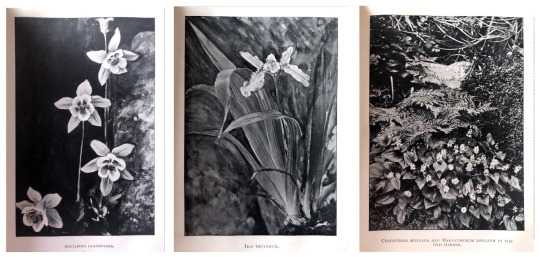
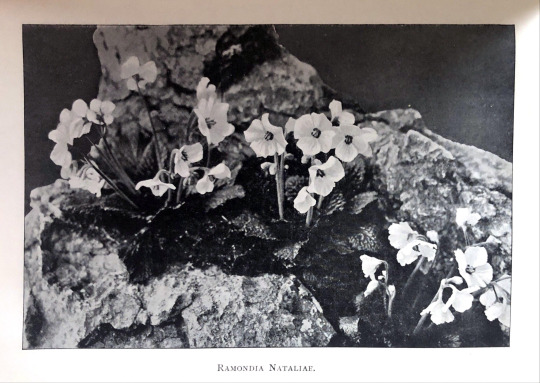


The photographs were taken in Farrer’s own garden. Little snapshots of the past :)!!
The text content of the book is quite intriguing and not all good, definitely carries heavy cultural baggage as does modern Western biology in general. I will preface this by saying I have absolutely not battled my way through this book, but I have read sections. there is a definite 1900s-Englishman tone in all the ways that can mean. part of that is most certainly a degree of both xenophobia and orientalism. When venerating the beauty of the wilderness and of Japanese/Chinese garden design, there is obvious othering in the language used & Farrer is dismayed at the effects of cultural transmission (this is most notably in European gardens attempting to mimic the artistic style of east Asian gardens but using the “wrong” plants, usually European plants rather than importing non-native varieties that are more “authentic”). Farrer was deeply in love with Asian biota and was notable for collecting plants to bring back to Europe, and while I cannot speak on Farrer’s techniques specifically, such practices are deeply intwined in racism and colonialism. In many cases, economic systems & resulting hardships forced on other cultures by Europeans allowed them to exert control over certain groups, stripping them of agency and employing them to extirpate “uncooperative” groups. I haven’t found anything re:Farrer in this context but it is essential to place the entire book within this context!!
However the majority of the book is Farrer describing gardening as well as his travels to collect plants for propagation in the UK (notably he died while on one such plant-collection travel). Apparently (& corroborated by the preface) the plants he searched for were ones that would grow well in the UK w/o much care, to make having a cool garden more accessible regardless of income. so if a plant needed extensive care and things like hothouses, it was not his priority.

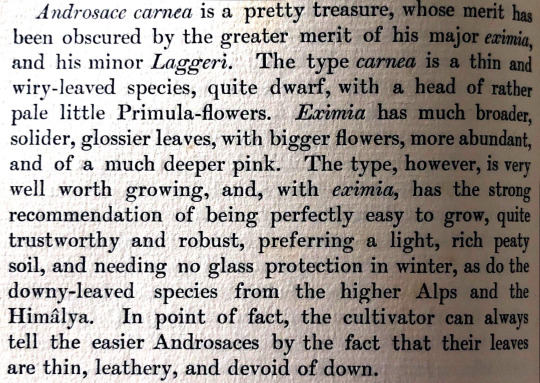
The way he describes plants is vaguely anthropomorphised in a generally appealing way, trying to make the reader appreciate the plant for things such as hardiness and robustness, which I suppose would align w/ the idea of making gardening easier. also in the sense that the robustness is tied in with beauty as well, as these features are of course not opposed to one another.
I may snoop through this book further to see anything else , we will see.
#library#antique books#antiquarian books#natural history#antique photography#history#books#old books#botany#gardening#horticulture#ecology#dark academia#miaow#osedax bookblog
64 notes
·
View notes
Text
Me: I'm not going to start collecting any arsenic books until I have a case to store them in for my own and other's safety.
Also me: ooooh a copy of Browning's The Pied Piper of Hamelin and Other Poems from 1897 with a beautiful green cover!
#dark academia#gothic academia#darkest academia#chaotic academia#academia#vampire academia#light academia#goth#gothic#victorian gothic#arsenic dye#victorian books#antique books#antiquarian books#arsenic book
10 notes
·
View notes
Text
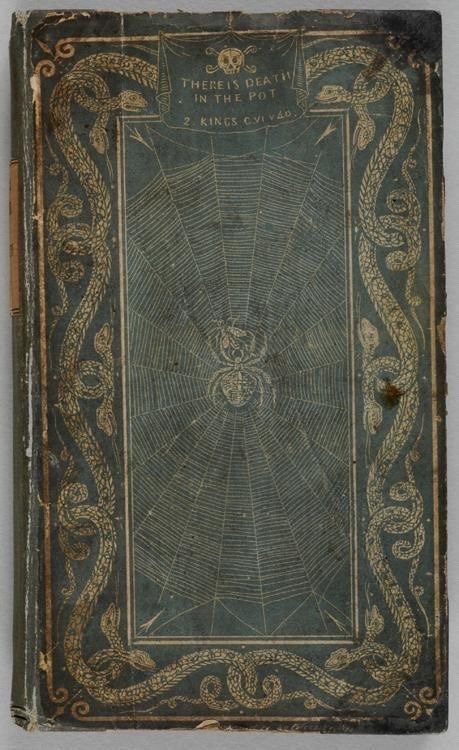

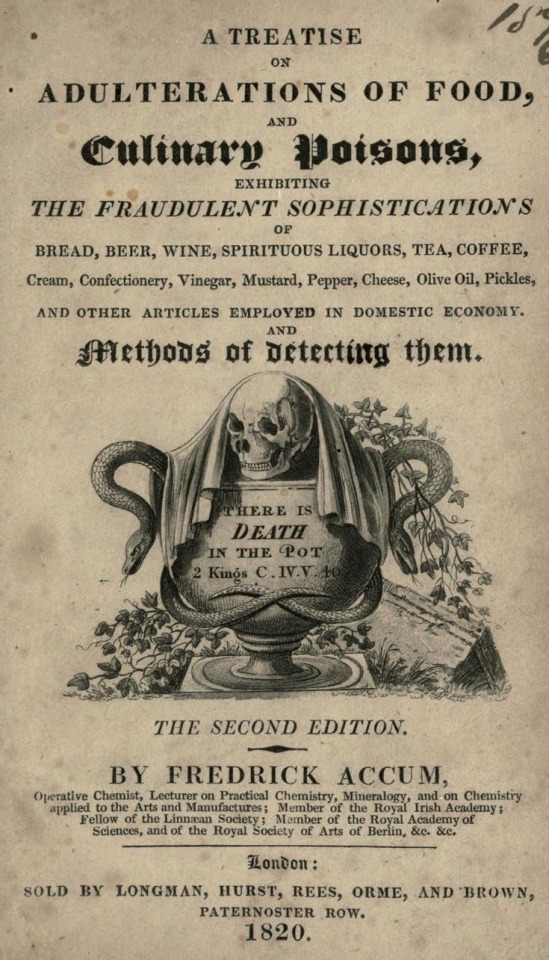
A Treatise on Adulterations of Food and Culinary Poisons by Frederick Accum, 1820.
This book was written by a famous English chemist and was an immediate success when it was first published and was into its fourth edition in only two years… but food adulteration statistics didn’t go down and Accum started to panic that instead of preventing it, he’d taught even more people how to do it, and he started vandalizing his own book in libraries and was forced to leave the country in disgrace.
Source: Christie’s Auction House
36 notes
·
View notes
Photo

Victorian palmistry book via Roses & Rue Antiques
#antique books#books#antiquarian books#victorian books#palmistry#palm reading#occult#esoteric#witchy
229 notes
·
View notes
Text

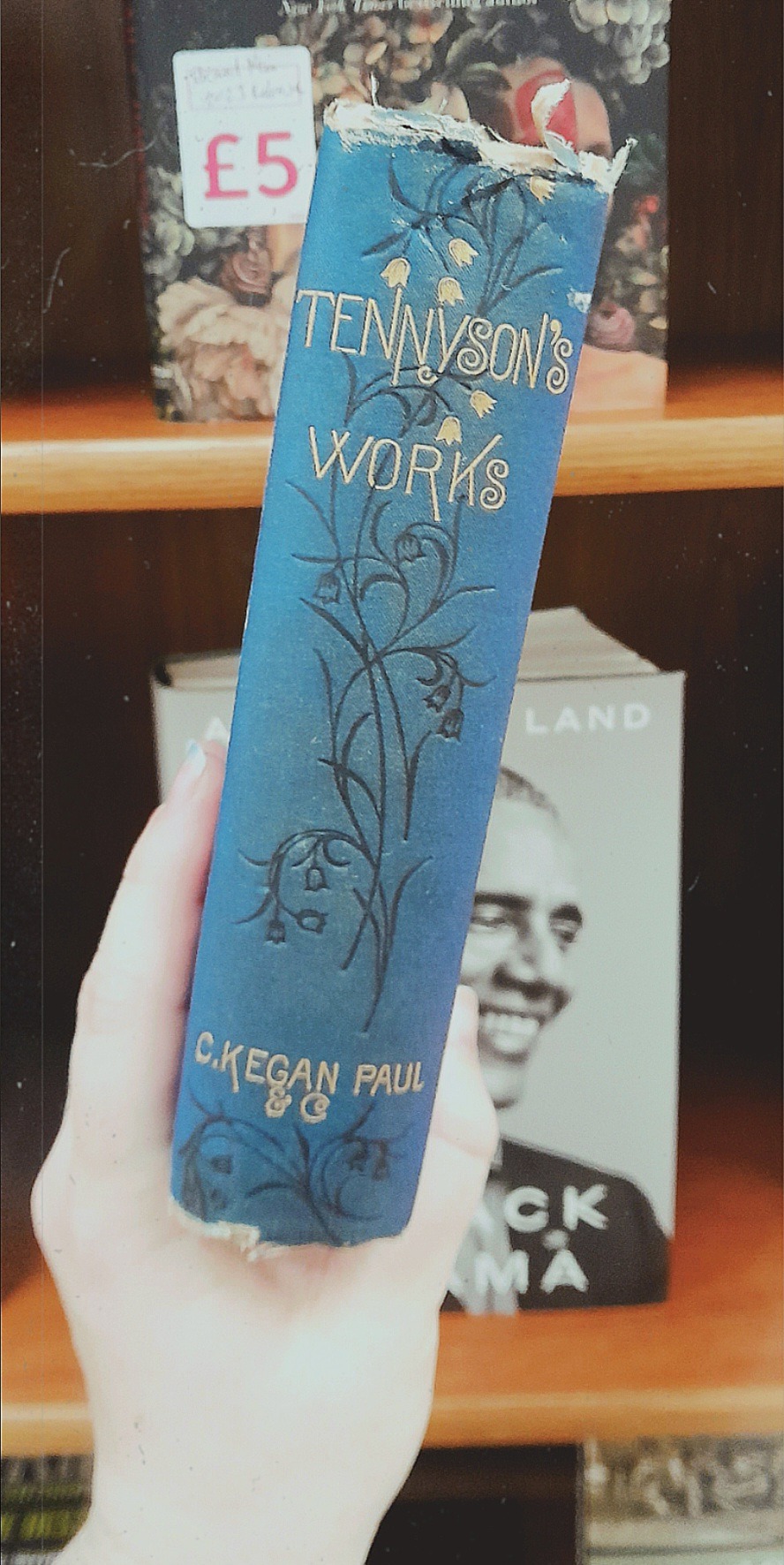

T e n n y s o n ' s W o r k s
1887 Edition
#old books#rare books#antiquarian books#book stuff#tennyson#blue books#pretty books#bookworm#bookseller#bookselling#book pages#book covers#poet#blue and gold#donated books#charity shop books#dark academia#book photo#booklr#bookblr#book cover#book community#book lover#book life#book pic#readers
80 notes
·
View notes
Text

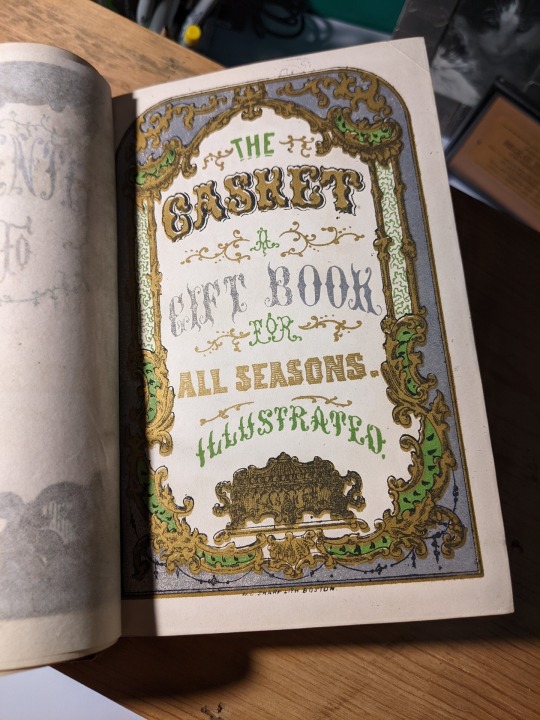
The name of this lovely little book is The Casket. This might seem like an odd name for a book filled with poems and excerpts from literature, particularly to Americans, for whom the word "casket" is a synonym for coffin. To the British, naturally, the word means a jewelry box. But in bygone days, the word was also used to describe a collection of literary or musical selections.
This particular volume was published by Phillips, Sampson & Company, probably around 1850. It is apropos of nothing, but I have discovered that if one searches online for "sampson and company casket" you will learn that there is a device called the Sampson which is designed for lifting bodies and coffins, and which can be acquired from a place called MortuaryMall.com.
#the casket#vintage books#antiquarian books#aziraphale's books#etymology#old books#w. c. sharp#phillips sampson and company
48 notes
·
View notes
Text

WHAT IS IT THAT MAKES USED BOOKSTORES SO WONDERFUL?
Used bookstores are more than just stores with books
by Keith Roysdon
After I recently lamented on social media about how much I miss used bookstores, a couple of people pointed out that I could get used books here or there. They usually cited those used books superstores like Half Price Books.
I replied that I’m not looking for used books – I’m looking for a used bookstore.
It’s probably an odd distinction, but used bookstores had an aura – yes, probably dust and yellowing paper, but also an aura of possibility. Would you find your new favorite book among 50 copies of some bestseller from 25 years ago?
I was spoiled for great used bookstores when I was younger and didn’t adequately appreciate that fact at the time. I was lucky to grow up in the 1960s and come of age in the 1970s, when anyone who was willing to go to yard sales and estate sales could buy huge numbers of books for next to nothing. Then they could turn those books around and sell them at their own yard sales and garage sales or sell them to used bookstores or use them as fodder for their own used bookstores.
READ MORE
#used books#bookstores#booksellers#retail#antiquarian books#literacy#community#librarians#book tumblr
49 notes
·
View notes
Text
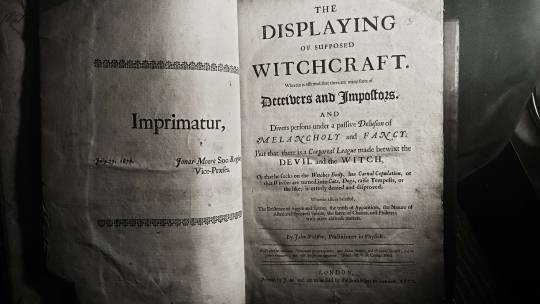
356 years old
10 notes
·
View notes